College upperclassmen and graduate students write lengthy research papers that are specific to their field. Such a paper, called a thesis, requires the student to conduct research in two ways. First, students always research what other researchers are saying about their subject. Second, students sometimes conduct their own primary research, especially at the graduate level. Once this research is finished, students should begin organizing a logical thesis by developing an outline with points that prove the main argument — itself often called the thesis.
Create the outline in a word-processing document. Choose an option that begins the outline with Roman numerals, then uses letters and numbers for the additional levels you add to the outline. This will make the thesis outline easier for you to read.
Use one sentence to describe how you will introduce the paper. You might use a quotation or an anecdote, or you can just explain your topic and its significance. Include one more point under your “Introduction” section that includes your thesis statement, or the point about which you intend to persuade others.
Present the background information for your topic by listing each major idea on its own line. Under each of those main ideas, list at least three subpoints that you will include in the paragraph for that main idea. This section should not only explain the topic, but explain other research relevant to your thesis.
Explain your findings. Again, each major point should be on its own line of the outline with at least two or three subpoints. Start with how you conducted research, then explain what you found when conducting that research. End this section by explaining how your research proves your thesis statement.
Conclude your thesis outline by reiterating the major points that prove your thesis. Then include a point about why your thesis is important — that is, what new insights does your paper offer? Finish by writing one or more points about what parts of your subject require further research, and include subpoints about how that further research would intersect with your current paper.
- Include citations in your outline. For example, if you use primary or secondary research to back up a major point, list the citation for that research next to the subpoint that backs up your major point. This helps you find the research easily when writing your thesis.
Colby Stream has been a writer since 2007. His work has appeared in “The Arbiter,” the student newspaper of Boise State University, as well as various websites. Stream graduated with a Bachelor of Arts in communication as a presidential civic leadership scholar.
This section describes the main elements of a written thesis at the bachelor’s and master’s levels. Although the specific structure described here is most relevant for empirical theses, much of the advice is also relevant for theoretical work. Please note that the formal requirements vary between different disciplines, and make sure to confer the guidelines that apply in your field.
For the contents in the various sections you may also confer Organising your writing.
Abstract and foreword
Most readers will turn first to the abstract. Use it as an opportunity to spur the reader’s interest. The abstract should summarise the main contents of your thesis, especially the thesis statement, but does not need to cover every aspect of the main text. The main objective is to give the reader a good idea of what the thesis is about.
In general the abstract should be the last thing that you write, when you know what you have actually written. It is nevertheless a good idea to work on a draft continuously. Writing a good abstract is difficult, since it should only include the most important points of your work. But this is also why working on your abstract can be useful – it forces you to identify exactly what it is you are writing about.
There are usually no formal requirements for forewords, but it is common practice to thank your supervisors, informants, and others who have helped and supported you. If you have received any grants or research residencies, you should also acknowledge these.
Note: Shorter assignments do not require abstracts and forewords.
1. Introduction
Your introduction has two main purposes: 1) to give an overview of the main points of your thesis; and 2) awaken the reader’s interest. It’s not a bad idea to go through the introduction one last time when the writing is done, to ensure that it connects well with your conclusion.
Tip: For a nice, stylistic twist you can reuse a theme from the introduction in your conclusion. For example, you might present a particular scenario in one way in your introduction, and then return to it in your conclusion from a different – richer or contrasting – perspective.
Your introduction should include:
- The background for your choice of theme
- A discussion of your research question or thesis statement
- A schematic outline of the remainder of your thesis
The sections below discuss each of these elements in turn.
1.1 Background
The background sets the general tone for your thesis. It should make a good impression and convince the reader why the theme is important and your approach relevant. Even so, it should be no longer than necessary.
What is considered a relevant background depends on your field and its traditions. Background information might be historical in nature, or it might refer to previous research or practical considerations. You can also focus on a specific text, thinker or problem.
Academic writing often means having a discussion with yourself (or some imagined opponent). To open your discussion, there are several options available. You may, for example:
- refer to a contemporary event
- outline a specific problem; a case study or an example
- review the relevant research/literature to demonstrate the need for this particular type of research
If it is common in your discipline to reflect upon your experiences as a practitioner, this is the place to present them. In the remainder of your thesis, this kind of information should be avoided, particularly if it has not been collected systematically.
Tip: Do not spend too much time on your background and opening remarks before you have gotten started with the main text.
Exercise
Write three different opening paragraphs for your thesis using different literary devices
For example:
a) “set the scene” with a (short) narrative
b) adopt a historical approach to the phenomenon you intend to discuss
c) take an example from the media to give your topic current relevance.
Observe to what extent these different openings inspire you, and choose the approach most appropriate to your topic. For example, do you want to spur emotions, or remain as neutral as possible? How important is the historical background? The exercise can be done in small groups or pairs. Discuss what makes an opening paragraph successful (or not). How does your opening paragraph shed light on what is to follow? What will the reader’s expectations be?
1.2 Defining the scope of your thesis
One of the first tasks of a researcher is defining the scope of a study, i.e. its area (theme, field) and the amount of information to be included. Narrowing the scope of your thesis can be time-consuming. Paradoxically, the more you limit the scope, the more interesting it becomes. This is because a narrower scope lets you clarify the problem and study it at greater depth, whereas very broad research questions only allow a superficial treatment.
The research question can be formulated as one main question with (a few) more specific sub-questions or in the form of a hypothesis that will be tested.
Your research question will be your guide as your writing proceeds. If you are working independently, you are also free to modify it as you go along.
How do you know that you have drafted a research question? Most importantly, a research question is something that can be answered . If not, you have probably come up with a theme or field, not a question.
- Use interrogative words: how, why, which (factors/situations) etc.
- Some questions are closed and only invoke concrete/limited answers. Others will open up for discussions and different interpretations.
Asking “What &…?” is a more closed question than asking “How?” or “In what way?”
Asking “Why” means you are investigating what causes of a phenomenon. Studying causality is methodologically demanding. - Feel free to pose partially open questions that allow discussions of the overall theme, e.g. “In what way &…?”; “How can we understand [a particular phenomenon]?”
- Try to condense your research question into one general question – and perhaps a few more specific sub-questions (two or three will usually suffice).
1.3 Outline
The outline gives an overview of the main points of your thesis. It clarifies the structure of your thesis and helps you find the correct focus for your work. The outline can also be used in supervision sessions, especially in the beginning. You might find that you need to restructure your thesis. Working on your outline can then be a good way of making sense of the necessary changes. A good outline shows how the different parts relate to each other, and is a useful guide for the reader .
It often makes sense to put the outline at the end of the introduction, but this rule is not set in stone. Use discretion: What is most helpful for the reader? The information should come at the right point – not too early and not too late.
2. Theory section
The theory used in an empirical study is meant to shed light on the data in a scholarly or scientific manner. It should give insights not achievable by ordinary, everyday reflections. The main purpose of using theory is to analyse and interpret your data. Therefore, you should not present theoretical perspectives that are not being put to use. Doing so will create false expectations, and suggests that your work is incomplete.
Not all theses have a separate theory section. In the IMRaD format the theory section is included in the introduction, and the second chapter covers the methods used.
What kind of theory should you choose? Since the theory is the foundation for your data analysis it can be useful to select a theory that lets you distinguish between, and categorise different phenomena. Other theories let you develop the various nuances of a phenomenon. In other words, you have a choice of either reducing the complexity of your data or expanding upon something that initially looks simple.
How much time and space should you devote to the theory chapter? This is a difficult question. Some theses dwell too long on theory and never get to the main point: the analysis and discussion. But it is also important to have read enough theory to know what to look for when collecting data. The nature of your research should decide: Some studies do not require much theory, but put more emphasis on the method, while other studies need a rich theory section to enable an interesting discussion.
3. Method section
In a scholarly research article, the section dealing with method is very important. The same applies to an empirical thesis. For students, this can be a difficult section to write, especially since its purpose may not always be clear.
The method chapter should not iterate the contents of methodology handbooks. For example, if you have carried out interviews, you do not need to list all the different types of research interview. You also do not need to describe the differences between quantitative and qualitative methods, or list all different kinds of validity and reliability.
What you must do is to show how your choice of design and research method is suited to answering your research question(s). Demonstrate that you have given due consideration to the validity and reliability of your chosen method. By &”showing&” instead of &”telling&”, you demonstrate that you have understood the practical meaning of these concepts. This way, the method section is not only able to tie the different parts of your thesis together, it also becomes interesting to read!
- Show the reader what you have done in your study, and explain why. How did you collect the data? Which options became available through your chosen approach?
- What were your working conditions? What considerations did you have to balance?
- Tell the reader what you did to increase the validity of your research. E.g. what can you say about the reliability in data collection? How do you know that you have actually investigated what you intended to investigate? What conclusions can be drawn on this basis? Which conclusions are certain and which are more tentative? Can your results be applied in other areas? Can you generalise? If so, why? If not, why not?
- You should aim to describe weaknesses as well as strengths. An excellent thesis distinguishes itself by defending – and at the same time criticising – the choices made.
4. Analysis
Your analysis, along with your discussion, will form the high light of your thesis. In the IMRaD format, this section is titled “Results”. This is where you report your findings and present them in a systematic manner. The expectations of the reader have been built up through the other chapters, make sure you fulfill these expectations.
To analyse means to distinguish between different types of phenomena – similar from different. Importantly, by distinguishing between different phenomena, your theory is put to work. Precisely how your analysis should appear, however, is a methodological question. Finding out how best to organise and present your findings may take some time. A good place to look for examples and inspiration is repositories for master’s theses.
If you are analysing human actions, you may want to engage the reader’s emotions. In this case it will be important to choose analytical categories that correlate to your chosen theory. Engaging emotions is not the main point, but a way to elucidate the phenomenon so that the reader understands it in a new and better way.
Note. Not all theses include a separate chapter for analysis.
5. Discussion
In many thesis the discussion is the most important section. Make sure that you allocate enough time and space for a good discussion. This is your opportunity to show that you have understood the significance of your findings and that you are capable of applying theory in an independent manner.
The discussion will consist of argumentation. In other words, you investigate a phenomenon from several different perspectives. To discuss means to question your findings, and to consider different interpretations. Here are a few examples of formulations that signal argumentation:
- On the one hand &… and on the other
- But is it really true that&…
- &… on can it also be supposed&…?
- &… another possible explanation may be &…
6. Conclusion or summing up?
The final section of your thesis may take one of several different forms. Some theses need a conclusion, while for others a summing up will be appropriate. The decisive factor will be the nature of your thesis statement and research question.
Open research questions cannot always be answered, but if a definite answer is possible, you must provide a conclusion. The conclusion should answer your research question(s). Remember that a negative conclusion is also valid.
A summing up should repeat the most important issues raised in your thesis (particularly in the discussion), although preferably stated in a (slightly) different way. For example, you could frame the issues within a wider context.
Placing your thesis in perspective
In the final section you should place your work in a wider, academic perspective and determine any unresolved questions. During the work, you may have encountered new research questions and interesting literature which could have been followed up. At this point, you may point out these possible developments, while making it clear for the reader that they were beyond the framework of your current project.
- Briefly discuss your results through a different perspective. This will allow you to see aspects that were not apparent to you at the project preparation stage
- Highlight alternative research questions that you have found in the source materials used in the project
- Show how others have placed the subject area in a wider context
- If others have drawn different conclusions from yours, this will provide you with ideas of new ways to view the research question
- Describe any unanswered aspects of your project
- Specify potential follow up and new projects
A thesis should “bite itself in the tail”
There should be a strong connection between your conclusion and your introduction. All the themes and issues that you raised in your introduction must be referred to again in one way or another. If you find out at this stage that your thesis has not tackled an issue that you raised in the introduction, you should go back to the introduction and delete the reference to that issue. An elegant way to structure the text is to use the same textual figure or case in the beginning as well as in the end. When the figure returns in the final section, it will have taken on a new and richer meaning through the insights you have encountered, created in the process of writing.
J. Schimel, 2012 Writing Science. How to write papers that get cited and proposals that get funded. New York: Oxford University Press
Thesis Submission Checklist
When turning in your thesis, please make sure to include the following:
- A signed cover page — original signature required
- A reader sheet. filled out by you and signed by your advisor — original signature required
- A second reader sheet with your name, ID, and department added, but the rest left blank (Draper provides the second reader)
- Your thesis abstract
- Your Draper Exit Questionnaire
Guidelines
To receive a master’s degree, the Draper Program and GSAS require that you successfully complete 32 points of course work and write a thesis. Please read the below thoroughly; these guidelines explain the thesis-writing process and related graduation requirements. Draper also offers periodic workshops for thesis writers, listed on our News and Events page. If you then have further questions, please call the office at (212) 998-8070 or email draper.program[at]nyu.edu. To download a pdf of the thesis guidelines, please clickhere .
What is a master’s thesis?
The master’s thesis is a carefully argued scholarly paper of approximately 12,000 – 13,000 words (roughly 50 pages). It should present an original argument that is carefully documented from primary and/or secondary sources. The thesis must have a substantial research component and a focus that falls within arts and science, and it must be written under the guidance of an advisor. As the final element in the master’s degree, the thesis gives the student an opportunity to demonstrate expertise in the chosen research area.
When should I start thinking about the thesis?
You should be thinking about your thesis, if only abstractly, from your first enrollment in the Draper Program. At the latest, you should have a clear idea of your topic and have found an advisor by the end of the semester before the one in which you will complete the thesis (see the timetable and deadlines chart, below).
Who can be my advisor?
Any regular NYU faculty member can be your thesis advisor, although individual faculty are not required to advise master’s theses. It is your responsibility to find an advisor. Your advisor will provide general guidance, and will help you refine your topic and develop your argument. Most students choose faculty members they have worked with in courses. Thesis advisors must be approved by the Program (along with the thesis topic).
What is the process and protocol?
After doing the initial research on your topic, prepare a 1-2 paragraph abstract, a preliminary bibliography (approximately ten to fifteen books or journal articles), and a brief outline before approaching a possible advisor. These will help you to convince your future advisor of the value and interest of your project. Once a faculty member has agreed to advise you, discuss your anticipated graduation date and agree on a timetable for meetings and submission of drafts. It is your responsibility to keep your advisor apprised of your progress.
After you have refined your topic and your advisor has approved it, complete the Application for Approval of Master’s Thesis Topic. have your advisor sign it, and submit it to the Draper offices. This form must be submitted by the thesis due date for the semester before the one in which you intend to graduate (e.g. December 16 for May graduation; see the chart, below). We will notify you via email when your topic has been approved by Draper. Do not start writing the thesis until you have an advisor who has approved your topic.
In most cases, students and advisors need to meet three or four times: initially, to finalize a topic, and to review the first or second draft. Keep in mind that your advisor must have enough time to read and evaluate your work before returning it to you with comments, and that you must have time to incorporate those comments. Don’t expect your advisor to return your thesis in a day or two, whether it is an early draft or the final copy. It is appropriate to ask your advisor when you can expect comments, but not to pressure her or him to respond quickly. You should also be prepared for the possibility that your advisor will request substantial changes in the thesis. Do not expect that your draft will require only minor corrections, or that the proposed final version you submit will necessarily be approved without further changes. It is your responsibility to see that the final copy is free from spelling and grammatical errors; your advisor is not responsible for line-by-line editing.
HUMAN SUBJECT RESEARCH
Theses involving interviews, surveys, or other research on human subjects often require prior approval. Because approval can take time, you should begin the application process as early as possible. Further information is available at nyu.edu/ucaihs/ or from the Office of Sponsored Programs, 212-998-2121.
Are there particular thesis formatting requirements?
- Yes, theses must conform to the following guidelines:
- The cover page must include the thesis title, your name, and your student ID number; your advisor’s name and a space for her or his approval signature; the month and year the degree will be conferred (not the month in which the thesis is submitted); and the statement: “A thesis in the John W. Draper Interdisciplinary Master’s Program in Humanities and Social Thought in partial fulfillment of the requirements for the degree of Master of Arts at New York University” (a sample cover page can be found here ).
- All sources for quotations and paraphrases must be documented. You may use any of the standard citation styles (MLA, Chicago, social science, etc.), subject to your advisor’s approval, provided you consistently follow a single style throughout the thesis.
- The thesis should be printed or typewritten on standard paper.
- We prefer unbound theses — a simple binder clip is sufficient. If you decide to bind your thesis, please make sure that your original, signed cover page is unbound.
What are the administrative requirements to graduate?
You must be enrolled in the semester in which you graduate, which means you must either take a course or maintain matriculation. Matriculation is not required during the summer term. You must also apply for graduation (set your graduation date) using Albert (albert.nyu.edu ) within the period the Registrar has specified for that semester (see nyu.edu/registrar/graduation/apply.html ).
How do I submit the thesis?
You must first give a clean copy of the finished thesis to your advisor. After your advisor has read and approved the thesis, it is your responsibility to submit the final copy, signed by your advisor on the cover page, to the Draper Program by the deadline listed below. You must also submit two Thesis Reader Sheets (one signed by your advisor, one blank), a thesis abstract, and the Draper Exit Questionnaire. Your advisor is the first reader and the Program will provide a second reader, usually the director or associate director. Students must have met all graduation requirements, including timely submission of the thesis, to participate in commencement ceremonies.
What happens after that?
Draper will assign your second reader, generally one of our directors. Once your thesis has been countersigned by the second reader, we will file the necessary paperwork with the registrar’s office and they will process your graduation. This series of steps takes approximately one month. Once your degree has been conferred, you will see it appear at the top of your online transcript. Eight weeks after that, the registrar will mail your diploma to you, so please be sure that your mailing address is correct in Albert. If you do not receive your diploma and request a new one, it will incur a fee.
What is a typical thesis-writing timetable?
Begin research; prepare abstract, bibliography, and outline.


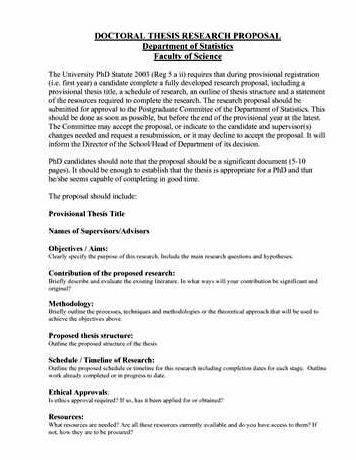


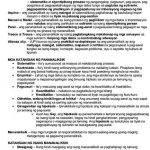 Pamamaraan ng pananaliksik sa thesis writing
Pamamaraan ng pananaliksik sa thesis writing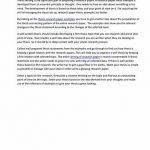 Sample topic for thesis writing
Sample topic for thesis writing Guidelines for writing references in thesis
Guidelines for writing references in thesis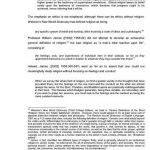 Phd thesis writing services in mumbai news
Phd thesis writing services in mumbai news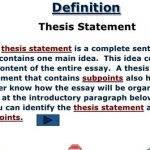 Open thesis definition in writing
Open thesis definition in writing






